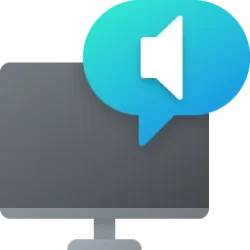Navigation
Install the app
How to install the app on iOS
Follow along with the video below to see how to install our site as a web app on your home screen.
Note: This feature may not be available in some browsers.
More options
Style variation
-
Disable Automatic Windows Updates in Windows 11
This tutorial will show you how to disable Windows Update from automatically downloading and installing updates in Windows 10 and Windows 11.- Brink
- Replies: 13
-
Use ViVeTool to Enable or Disable Hidden Features in Windows 11
This tutorial will show you how to use ViVeTool to enable or disable hidden features in Windows 10 and Windows 11.- Brink
- Replies: 49
-
Restore Classic File Explorer with Ribbon in Windows 11
This tutorial will show you how to restore the classic File Explorer with Ribbon for your account or all users in Windows 11.- Brink
- Replies: 401
-
Create Windows 11 Bootable USB Installation Media
This tutorial will show you how to create a bootable USB flash drive used to install Windows 11 with UEFI support.- Brink
- Replies: 128
-
Uninstall or Reinstall Copilot app
This tutorial will show you different ways to uninstall or reinstall the Copilot app for your account or all users in Windows 10 and Windows 11.- Brink
- Replies: 0
-
Add or Remove "Learn about this picture" Desktop icon
This tutorial will show you how to add or remove the "Learn about this picture" desktop icon when using Windows Spotlight as your desktop background for your account in Windows 11 and Windows 10.- Brink
- Replies: 27
-
Use SFC to Repair System Files in Windows 11
This tutorial will show you how to run the System File Checker (SFC) tool to repair missing, corrupted, and modified system files in Windows 10 and Windows 11.- Brink
- Replies: 25
-
Download Official Windows 11 ISO file from Microsoft
This tutorial will show you how to download an official Windows Server ISO or Windows 11 64-bit or ARM64 ISO file from Microsoft.- Brink
- Replies: 415
-
Repair Install Windows 11 with an In-place Upgrade
This tutorial will show you how to do a repair install of Windows 11 by performing an in-place upgrade without losing anything.- Brink
- Replies: 326
-
Clean Install Windows 11
This tutorial will show you step by step on how to clean install Windows 11 at boot on your PC with or without an Internet connection and setup with a local account or Microsoft account.- Brink
- Replies: 233
Tutorials
Windows 11 tutorials, tricks, tips, and guides.
This tutorial will show you how to see which user a process is running as in Windows 11.
Run as different user allows a user to run a .bat, .cmd, .exe, .msc, or .msi file as a different user. This allows running the .bat, .cmd, .exe, .msc, or .msi file with the same permissions and access rights as the different user instead of the user account they are currently signed in to.
Run as different user will only affect the current instance of the running .bat, .cmd, .exe, .msc, or .msi file. You can open multiple instances of the file with each instance running as a different user.
A process is an instance of a program that is being executed. Each process running in Windows is assigned a unique process ID (PID).
Option One: See Which...
This tutorial will show you how to sign in to Windows 11 with your account.
Having different accounts on a shared PC lets multiple people use the same device, all while giving everyone their own sign-in info, plus access to their own files, browser favorites, and desktop settings.
You can add a local user account (an offline account) or Microsoft account for a user to sign in to the PC with.
When a user signs in to Windows, the system loads their profile. Because each user has a unique user account, this allows multiple users to share a computer. When a user signs in, the desktop settings, files, favorites, and history they see are theirs; they cannot be accessed by other users. When that user signs out, their profile is preserved...
This tutorial will show you how to enable or disable an account in Windows 11.
Having different accounts on a shared PC lets multiple people use the same device, all while giving everyone their own sign-in info, plus access to their own files, browser favorites, and desktop settings.
If you have an account on your PC that you want to make unavailable without deleting it, you can disable the account and enable the account again later when wanted.
When an account is disabled, it can no longer be signed in to until enabled again. The account's name will no longer appear on the sign-in screen or user menu on the Start menu until enabled again.
You must be signed in as an administrator to enable or disable an account.
Option One...
This tutorial will show you how to add a guest account to your Windows 11 or Windows 10 PC.
Having different accounts on a shared PC lets multiple people use the same device, all while giving everyone their own sign-in info, plus access to their own files, browser favorites, and desktop settings.
A guest account is a restricted local account for users you don't want to have a permanent account on your PC. It allows people (visitors) to use your PC without having access to your personal files. Users signed in to the guest account can't install apps, can't open Microsoft Store apps, can't install hardware, and can't open Settings.
You can no longer use the built-in Guest account in Windows. As a workaround, we can add a local account...
This tutorial will show you how to remove linked Windows 10 or Windows 11 PCs and Xbox consoles devices from your Microsoft account.
When you sign in to a device with your Microsoft account, that device will get added and linked to your Microsoft account.
When you add a device to your Microsoft account, you can access online features for your device from your Microsoft account devices page at Microsoft.
If you no longer use a device or sign in to the device with your Microsoft account, you can remove the device from your Microsoft account devices list to unlink it.
References:
https://support.microsoft.com/en-us/windows/remove-a-device-from-your-microsoft-account-dda2c664-9d57-e5db-acf0-67f14d5fdf3c...
This tutorial will show you how to see a list of all currently signed in user accounts on the computer in Windows 11.
Sometimes you may need or like to know if there are any users currently signed in to the computer.
This can be helpful for security purposes, and to sign out the user(s) if needed.
Option One: See All Signed in Users in Task Manager
Option Two: See All Signed in Users using Command
See All Signed in Users in Task Manager
1 Open the Task Manager (Ctrl+Alt+Del).
2 Click/tap on the Users tab. (see screenshot below)
3 You will now see all currently signed in users and their status.
See All Signed in Users using Command
1 Open Windows Terminal, and select either Windows PowerShell or Command Prompt.
2 Copy and...
This tutorial will show you how to turn on or off automatically restart apps when you sign back in for your account in Windows 11.
You can have Windows automatically save your open restartable apps when you sign out, restart the computer, or shut down the computer and restart them when you sign back in.
Starting with Windows 11 build 22635.4580 (Beta 23H2) and build 26120.3281 (Beta/Dev 24H2), when “Restore previous folder windows at logon” is enabled in File Explorer, Windows will also now restore all the extra tabs which you previously had open in each File Explorer window. As part of this work, Microsoft has also updated the logic for the “Automatically save my restartable apps and restart them when I sign back in” setting via...
This tutorial will show you how to use Run as different user in Windows 11.
Run as different user allows a user to run a .bat, .cmd, .exe, .msc, or .msi file as a different user. This allows running the .bat, .cmd, .exe, .msc, or .msi file with the same permissions and rights as the different user instead of the user account they are currently signed in to.
Run as different user will only affect the current instance of the running .bat, .cmd, .exe, .msc, or .msi file. You can open multiple instances of the file with each instance running as a different user.
Run as different user will not be available for Microsoft Store apps.
Option One: "Run as different user" in File Explorer
Option Two: "Run as different user" from Taskbar...
This tutorial will show you how to change the kiosk app in Windows 11 Pro, Enterprise, and Education editions.
A single-app kiosk uses the Assigned Access feature to run a single app above the lock screen. When the kiosk account signs in, the app is launched automatically. The person using the kiosk cannot do anything on the device outside of the kiosk app.
If the kiosk app is closed, it will automatically restart.
When you are in kiosk mode, you can press the Ctrl + Alt + Delete keys to exit kiosk mode.
You can change the app used in kiosk mode anytime you like.
Reference:
https://docs.microsoft.com/en-us/windows/configuration/guidelines-for-assigned-access-app
You must be signed in as an administrator to change the kiosk app...
This tutorial will show you how to remove a kiosk in Windows 11 Pro, Enterprise, and Education editions.
A single-app kiosk uses the Assigned Access feature to run a single app above the lock screen. When the kiosk account signs in, the app is launched automatically. The person using the kiosk cannot do anything on the device outside of the kiosk app.
If the kiosk app is closed, it will automatically restart.
When you are in kiosk mode, you can press the Ctrl + Alt + Delete keys to exit kiosk mode.
You must be signed in as an administrator to remove a kiosk.
Here's How:
1 Open Settings (Win+I).
2 Click/tap on Accounts on the left side, and click/tap on Other Users on the right side. (see screenshot below)
Open Other Users...
This tutorial will show you how to change the account type of users to be either a standard user or administrator in Windows 11.
Having different accounts on a shared PC lets multiple people use the same device, all while giving everyone their own sign-in info, plus access to their own files, browser favorites, and desktop settings.
You can add a local user account (an offline account) or Microsoft account for a user to sign in to the PC with. These can be a standard user or administrator account type.
When you add an account in Windows, it will be a standard user account by default.
Standard User - Standard user accounts are good for everyday usage, and can be a local account or Microsoft account. Standard user accounts can use...
Latest Tutorials
-
Site Usage Opt In or Out of New Insider Build Push Notifications from ElevenForum.com
- Started by Brink
- Replies: 0
-
Browsers and Mail Enable or Disable Export Passwords in Microsoft Edge on Windows 11
- Started by Brink
- Replies: 0
-
-
-
Accounts Enable or Disable Enhanced Anti-Spoofing for Windows Hello Facial Recognition in Windows 11
- Started by Brink
- Replies: 4
-
-
Apps Enable or Disable Move or Install Apps on Non-System Drives in Windows 11
- Started by Brink
- Replies: 0
-
Apps Enable or Disable Recommended Actions from Apps in Windows 11
- Started by Brink
- Replies: 0
-
-
Tutorial Tags
android
background
battery
bitlocker
bluetooth
boot
color
context menu
copilot
defender
desktop
display
drive
edge
file explorer
folder
fonts
hyper-v
icon
keyboard
libraries
location
mouse
notifications
onedrive
outlook
pen
pointer
power
printer
recall
screenshot
search
settings
share
shortcuts
sign-in
sound
start menu
store
taskbar
terminal
theme
touch
usb
voice
wi-fi
widgets
wsa
xbox




















